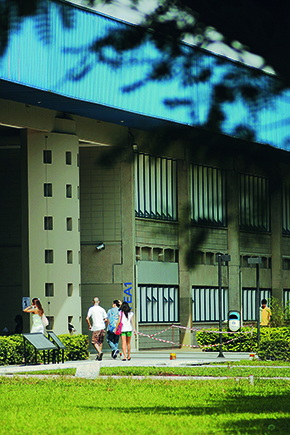
miguel boyayanUniversity goes up in rankingmiguel boyayan
The University of São Paulo/USP was ranked as the 87th best university in the world by Webometrics, a rating institute created by the Consejo Superior de Investigaciones Cientificas/CSIC, the Spanish National Scientific Research Council. The ranking measures the quality and transparency of the institutions, as it evaluates the contents available on the web, especially the contents related to the generation of scientific knowledge. Of the 500 institutions on the list, USP went up by 26 points in comparison to the list announced in July 2008; it ranks as the number one university in Brazil. Mayana Zatz, the deputy dean of USP, points out that this performance is related to the growth of various indicators. The number of scientific articles written by USP researchers and published in the Web of Science data base went up from 17,419 in the period from 2001 to 2004, to 23,679, in the period from 2005 to 2008. In the same period, the number of references went up from 53,804 to 83,861 and the average impact rate of the articles went up from 3,09 to 3,54. The level of internationalization has also increased. In 2008, USP hosted 402 visiting researchers, in comparison to 188 visiting researchers hosted in 2005. In the same period, the number of USP students who went abroad went up by 87.5% (graduate) and 39.2% (post-graduate). Funds raised from outside sources, such as agencies and corporations, went up from R$ 370 million in 2005 to R$ 628 million in 2008. “These funds reflect the quality of our scientific production,” says Mayana. Scientific production increased by 42.3% in the period from 2005 to 2008, and the enrollment numbers increased by approximately 7.6%. According to Mayana, this data contradicts the version published in the press, according to which the increase in the number of students coincided with the drop in production. “This version was based on the information contained in USP’s Annual Report, without taking into account other data bases,” she explains. “We have the potential to improve and the data tells us that we’re moving in the right direction,” she adds.
Republish
